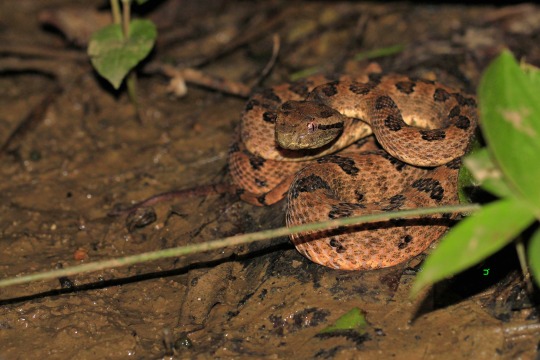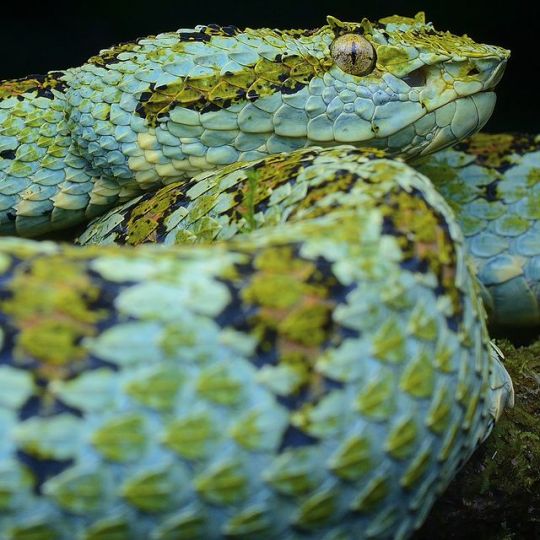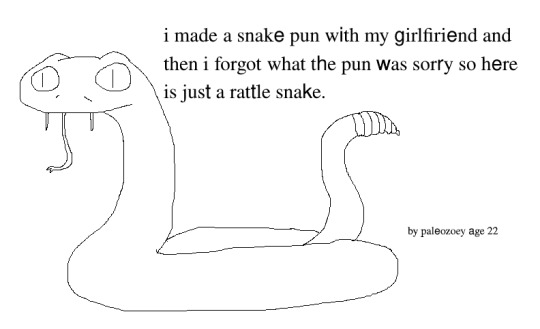#Viperidae
Explore tagged Tumblr posts
Text

Variable Bush Vipers (Atheris squamigera), family Viperidae, from central and Western Africa
Venomous.
photograph by Mark Kostich
3K notes
·
View notes
Text

A short-tailed mamushi (Gloydius brevicauda) preys on a Chinese red-headed centipede (Scolopendra mutilans) in Korea
by Jean-Jacques Strydom
#short tailed mamushi#vipers#snakes#reptiles#gloydius brevicauda#gloydius#viperidae#serpentes#squamata#reptilia#chordata#chinese red headed centipede#centipedes#myriapods#scolopendra mutilans#scolopendra#scolopendridae#scolopendramorpha#chilopoda#myriapoda#arthropoda#wildlife: korea#wildlife: asia#predation#animal death
204 notes
·
View notes
Text



Managing the Mangshan Viper
The mangshan viper, also known as the Mang Mountain pit viper, the Chinese pit viper, and the iron-headed pit viper (Protobothrops mangshanensis), is a species of pit viper found in south-central China. It is endemic to the Mangshan mountain region and the surrounding areas, and is typically found in tropical montane forests at elevations of 800–1,300 m (2,600–4,300 ft).
Mangshan pit vipers are notoriously hard to spot due to their camouflage-patterned green and brown scales, which are perfectly suited to blend into the forest. However, they grow to be quite large; some up to 203 cm (6.66 ft) and weighing 5 kg (10 lbs). In fact, they are among the largest members of the pit viper family.
P. mangshanensis is a notoriously shy and solitary species. They are nocturnal, using their camouflage to remain hidden and their 'pit organs' to sense the heat of passing prey. They feed primarily on rodents, birds, and frogs. Thanks to their size, ability to blend in, and their incredibly potent venom, adults have virtually no predators. Eggs and juveniles however, may be vulnerable to birds of prey, larger reptiles, and carnivorous mammals.
Though the start of the breeding season is unknown, females lay eggs in June or July. They may lay up to 27 eggs in a clutch, in a nest built from leaf litter, and guard them until they hatch some 50 days later. This is unusual among pit vipers, as most other species are oviviparous- incubating the eggs internally and giving birth to live young. Once the eggs hatch, the young are fully independent. Individuals may live up to 25 years in the wild.
Conservation status: The Chinese pit viper is classified as Endangered by the IUCN. There are approximately 500 individuals in the wild, and the population is believed to be declining due to illegal hunting and collection for the pet trade, habitat destruction, and climate change. There are about 150 Mangshan pit vipers in zoos and husbandry programs.
Photos
Los Angeles Zoo
Julie Larson
Václav Šilha
#mangshan pit viper#Squamata#Viperidae#pit vipers#vipers#snakes#serpents#squamates#reptiles#tropical forests#tropical forest reptiles#mountains#mountain reptiles#asia#east asia
100 notes
·
View notes
Text

female blue T. insularis sitting on top of a piece of blue agate
197 notes
·
View notes
Text
They warn me before I take a step closer, how kind!
Short-tailed Mamushi (Gloydius brevicauda)
#reptile#snake#snakes#viperidae#viper#mamushi#snakes of tumblr#photographers on tumblr#my photography#original photographers#photography#nature#wildlife photography#macro photography#nature photography#nature video#nature sound#snakes are cool#oct 29 2022#noai#no to generative ai
6 notes
·
View notes
Text



a big viper, a tiny viper and a lizard
28 notes
·
View notes
Text

サキシマハブ
水溜まりを見つめる腹ペコさん。
#viper#viperidae#生き物#自然#nature#photography#写真#animal#snake#venom snake#reptiles#reptblr#snakes#サキシマハブ#ハブ#毒蛇#ヘビ#西表島
56 notes
·
View notes
Text

Blotched Palm-pit Viper
#blotched palm pit viper#snake#Bothriechis supraciliaris#Reptilia#Squamata#Serpentes#Viperidae#Bothriechis#upl
24 notes
·
View notes
Text

#Tropidolaemus wagleri#wagler's pit viper#temple viper#snake#viper#pit viper#animal#wildlife#nature#creative commons#viperidae#serpentes#squamata#reptilia#chordata#singapore
12 notes
·
View notes
Text


#animal polls#my polls#cottonmouth#snake#water snake#north american snake#herpblr#herpetology#venomous snakes#viper#viperidae
12 notes
·
View notes
Text

Get very here now
7 notes
·
View notes
Text

Hairy Bush Viper (Atheris hispida), family Viperidae, Uganda
Venomous.
photograph by Cristian Torica
2K notes
·
View notes
Text

A northern cottonmouth (Agkistrodon piscivorus) in Arkansas, USA
by Alan
#cottonmouth#northern cottonmouth#vipers#snakes#reptiles#agkistrodon piscivorus#agkistrodon#viperidae#serpentes#squamata#reptilia#chordata#wildlife: arkansas#wildlife: usa#wildlife: north america
220 notes
·
View notes
Text
Bonus Uncharismatic Fact of the Day
People can change a lot as they grow up; you might change your hair, your clothes, even the type of venom you produce! As juveniles, black-tailed rattlesnakes produce a venom with the chemical crotamine, which causes paralysis. However, as adults, they ditch this extra chemical and stick solely to phospholipases metalloproteinases which prevent blood from clotting. It's thought that juveniles have this extra chemical to help catch their prey.

(Image: A black-tailed rattlesnake (Crotalus molossus) by Michael Price)
Thank you to anon for your donation to Janna's gofund me!
#black-tailed rattlesnake#Squamata#Viperidae#rattlesnakes#vipers#snakes#serpents#squamates#reptiles#uncharismatic facts
111 notes
·
View notes
Text

22 notes
·
View notes
Text

9 notes
·
View notes